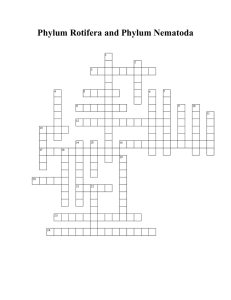Nematodes and minor clades
advertisement
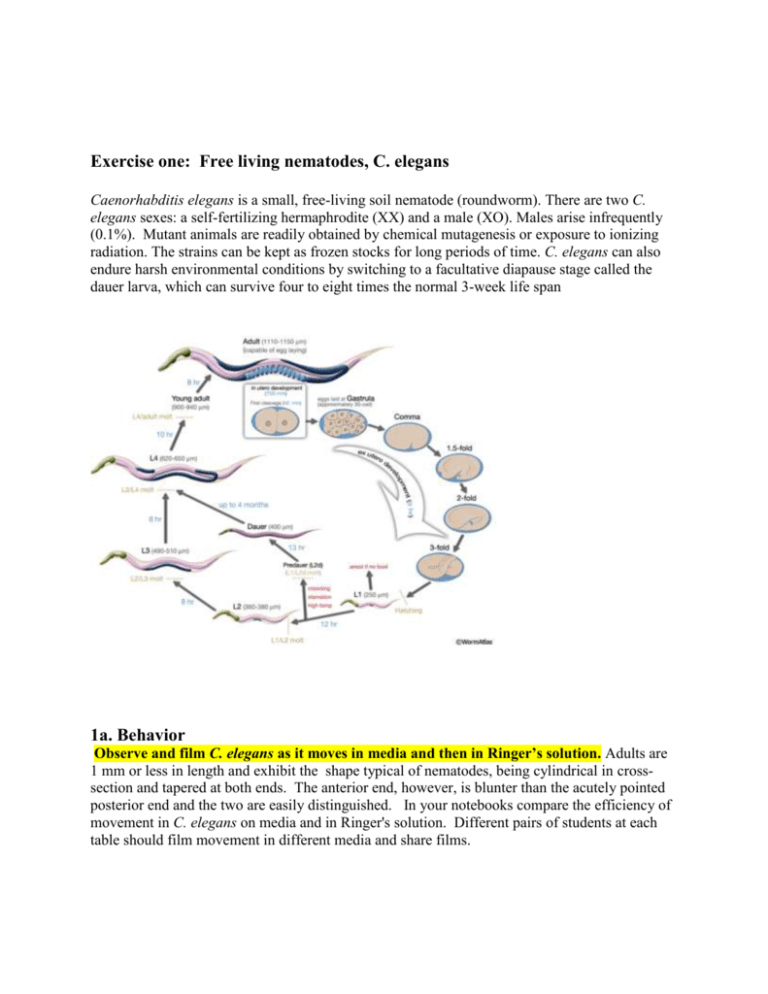
Exercise one: Free living nematodes, C. elegans Caenorhabditis elegans is a small, free-living soil nematode (roundworm). There are two C. elegans sexes: a self-fertilizing hermaphrodite (XX) and a male (XO). Males arise infrequently (0.1%). Mutant animals are readily obtained by chemical mutagenesis or exposure to ionizing radiation. The strains can be kept as frozen stocks for long periods of time. C. elegans can also endure harsh environmental conditions by switching to a facultative diapause stage called the dauer larva, which can survive four to eight times the normal 3-week life span 1a. Behavior Observe and film C. elegans as it moves in media and then in Ringer’s solution. Adults are 1 mm or less in length and exhibit the shape typical of nematodes, being cylindrical in crosssection and tapered at both ends. The anterior end, however, is blunter than the acutely pointed posterior end and the two are easily distinguished. In your notebooks compare the efficiency of movement in C. elegans on media and in Ringer's solution. Different pairs of students at each table should film movement in different media and share films. 1b. Anatomy: As usual, photograph and try to identify as many of the structures labeled in the diagrams below. Make a wetmount of a few nematodes and cover it with a coverslip. Examine the preparation with the compound microscope and find relatively inactive worms to study. It may be necessary to allow the slide to dry out slightly so you can observe them. Search the slide for specimens and distinguish between males and females. Choose the largest specimens you can find for observation.. Males also have a pair of copulatory spicules protruding from the cloaca near the posterior end of the worm. Females, being viviparous, usually contain juvenile worms of various sizes . Study representatives of both sexes. ROTIFERS The anterior end of the animal has one or more ciliated bands, the corona, involved in suspension feeding and locomotion. A neck connects the corona to the trunk, the latter holding most of the organ systems.. The mouth is set in the midst of the corona, and opens into the pharynx, which includes a highly specialized set of internal jaw-like elements collectively called a mastax. The mastax is clearly visible in most larger rotifers as a cuticularized mass in the neck region, it tends to move periodically by muscles attached to it. The mastax is a complex, cuticularized region of the pharynx, with several jaw elements (called trophi), operated by specialized musculature. You should be able to see the trophi at high magnification. The structure of trophi vary greatly among rotifer groups and is related to feeding mode, some are used for grinding food captured by suspension feeding (such as diatoms), others are raptorial and serve carnivorous species, yet others are suctorial, creating a piston-like action. The stomach is the most conspicuous feature at mid body, and it is comprised of unusually large cells. Females have a syncytial ovary and yolk gland in one. Most rotifer populations are all female but males can be produced seasonally in some. Several flame bulb-style protonephridia are connected to a long protonephridial canal, which empties through a bladder into the cloaca. Living rotifers provide one of the best glimpses at protonephridia; see if you can see the flickering of the flame cells at high magnification. All these organs lie in a spacious pseudocoel. Many rotifers also have an annulated posterior foot, often ending in a pair of toes. Cement glands running down the foot serve to attach these animals through their opening on the toes. In the pond water/culture you will be observing planktonic rotifers, which swim around with their corona Exercise three: Film rotifer locomotion. Describe how they use their “toes” or “feet”? Obtain a movie of their feeding. If you cannot observe them feed take a photograph of a living specimen and label the Corona, mastax and stomach. ACANTHOCEPHALA Acanthocephalans range in size from a couple of millimeters to some that are a full meter in length and are found in both freshwater and marine environments. Whole mounts of Acanthocephala allow you to see the main external, and internal features of these animals. The most obvious is the spiny proboscis that is extended by the hydrostatic pressure created by the fluid filled sacs, lemnisci. When its not everted the proboscis lies inside the proboscis sheath. The body is covered with a proteinaceous cuticle produced by the underlying syncytial epidermis. The large nuclei of the epidermis are usually visible in the whole mounts. Acanthocephalans don’t have a digestive tract and food is absorbed across the body wall. A thin band of tissue, the ligament and its modification into ligament sacs, runs the length of the body and is probably all that remains of the gut. Acanthocephalans are dioecious, males being smaller than the females. In females, the ovary forms in the anterior part of the body in close association with the exterior wall of the anterior ligament sac. Eggs are released into the pseudocoel and are fertilized in the cavity by sperm received from the male. The eggs develop into the acanthor larva and these can be seen in the pseudocoel and the female reproductive tract. The uterine bell sorts the larvae and allows only those at the appropriate stage of development to pass into the uterus through the oviduct and are released in the feces of the definitive host. The intermediate arthropod host ingests it. Once inside the hemocoel, it develops into an acanthella larva before finally transforming into the cystacanth, which, along with the insect that houses it, is ingested by the definitive host to complete the life cycle. Two large testes, one in front of the other, are attached to the ligament sac and are the anterior and posterior testis. A sperm duct leads to the evertable penis housed inside the bursa. During mating the bursa is everted and helps the male hold onto the female. When mating is finished the male uses secretions from the cement gland to close the females genital opening. Exercise 4: Take a photograph of a slide and label whatever structures you can identify. GASTROTRICHA Gastrotrichs are a small phylum of minute, ciliated, acoelomate worms. The group includes both marine and freshwater species. Lepidodermella is a small freshwater species that lives on algae and debris in ponds. Study the animals provided under high magnification; you may want to use protoslo, or draw water out with a paper towel used as a wick from under the slide, to slow them down. Note the rounded head, with bristle clumped in tufts, followed by a narrowed "neck", elongate trunk, and the paired caudal furci that end in the adhesive organs. Gastrotrichs are covered with cuticle, yet are partly ciliated – each cilia itself has a thin cuticular covering. The cuticle in many gastrotrichs can be ornamented with scales and spines. Watch the animal move with cilia (in two ventral tracts in this species) and attach with the adhesive system. Note the terminal mouth, leading to a buccal capsule, muscular and elongate pharynx, and simple mid gut. A pair of coiled protonephridia lie lateral to the gut, and you may be able to see the flame bulb beating at their end. On each side of the digestive tube at the midbody region, a much-coiled protonephridial tubule may be detected in favorable preparations. It terminates in a flame bulb. Most marine gastrotrichs lack this structure. Many freshwater gastrotrichs reproduce first parthenogenically, then become hermaphroditic and reproduce sexually later in life. The affinities of gastrotrichs to other phyla are much debated and remain uncertain. Exercise 5: Obtain a movie of gastrotrich locomotion and compare it to that of a rotifer.
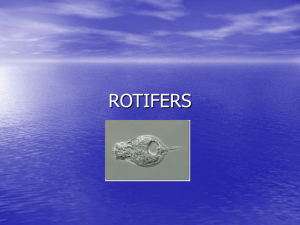
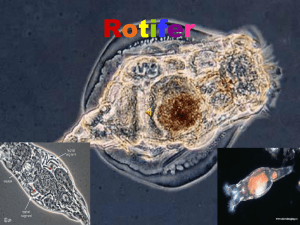
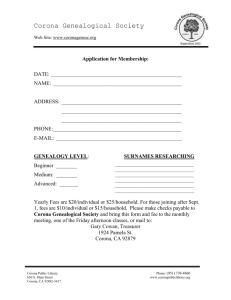
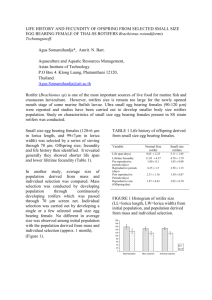
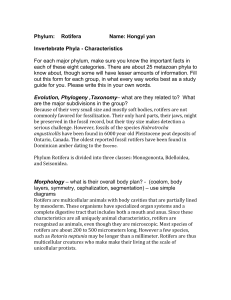



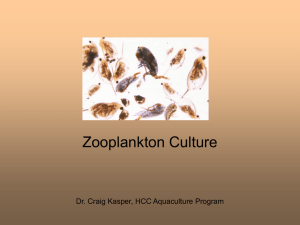

![30 — The Sun [Revision : 1.1]](http://s3.studylib.net/store/data/008424494_1-d5dfc28926e982e7bb73a0c64665bcf7-300x300.png)
